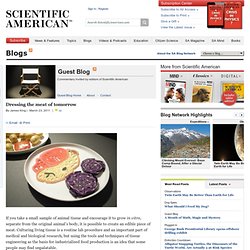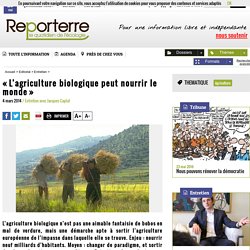

E. Chromi, des couleurs pour soigner. Dressing the meat of tomorrow. If you take a small sample of animal tissue and encourage it to grow in vitro, separate from the original animal’s body, it is possible to create an edible piece of meat.

Culturing living tissue is a routine lab procedure and an important part of medical and biological research, but using the tools and techniques of tissue engineering as the basis for industrialised food production is an idea that some people may find unpalatable. Disembodied cuisine The first piece of in vitro meat grown for human consumption was not produced by science or industry, it was produced by art. More specifically, it was created by the artists Oron Catts, Ionat Zurr and Guy Ben Ary in 2003 as part of their ongoing Tissue Culture and Arts project. "L'agriculture biologique peut nourrir le monde" L’agriculture biologique pourrait alimenter neuf milliards d’êtres humains et être plus productive que notre agriculture conventionnelle.

C’est l’idée iconoclaste défendue par Jacques Caplat. Il est agronome, ancien conseiller agricole, fils d’agriculteur et auteur d’un ouvrage intitulé L’Agriculture biologique pour nourrir l’humanité (Actes Sud). Copier-cloner.